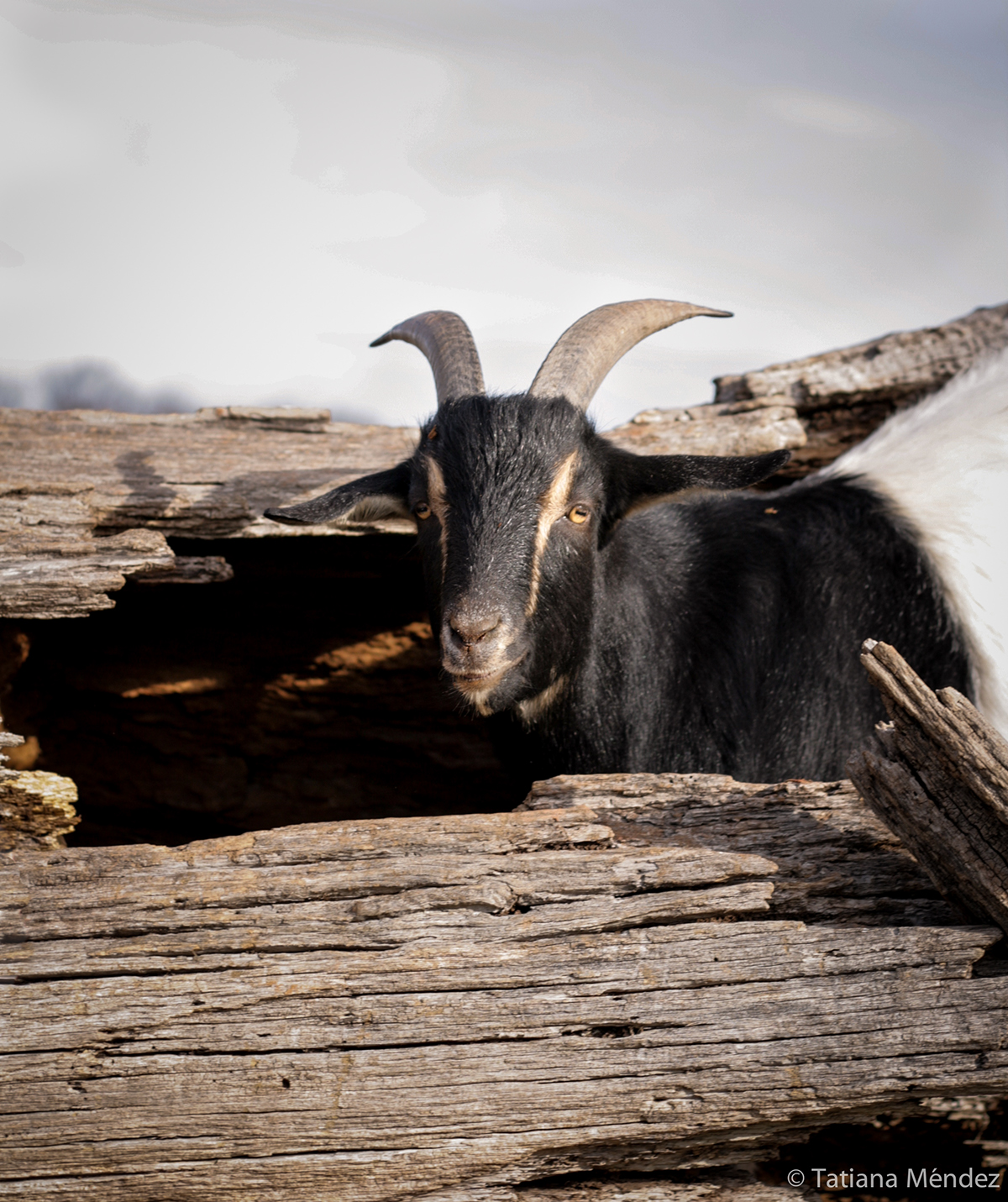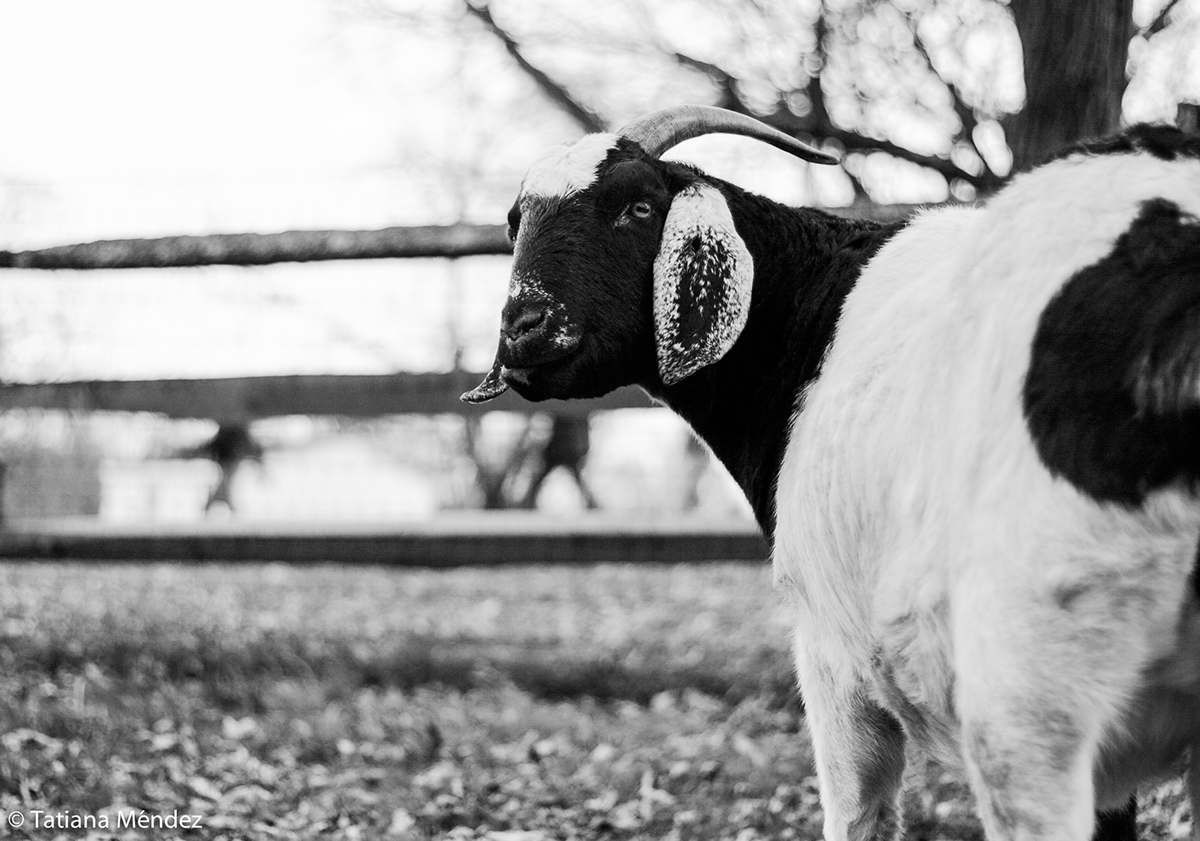
Zachary is a tiny baby goat who was being kept on someone's deck in a cat carrier in the freezing cold and his loud cries, which sounded like those of a human baby, alerted neighbors. The owner of the home said he was planning to "sacrifice" Zachary for New Years in a religious ceremony. Although they could not stop him from this due to freedom of religion, Greenbelt Animal Control was thankfully able to confiscate little Zachary because it is illegal to keep livestock in the city. He is now safe and happy and loves being held and petted. He is very sweet, and will snuggle up in everyone's lap and fall asleep. The idea of someone slitting the throat of this trusting, innocent little goat is truly disgusting. We are so glad he will be able to live out his whole life in peace and happiness here. From Poplar Spring Animal Sanctuary's Facebook Page.

Sebastian is a pygmy goat who was being kept in a hoarding situation in MD and was confiscated by animal control. He was living inside a house in a room stuffed full of other sick animals, including snakes, opossums, skunks, dogs, cats, and cockatoos. Authorities were notified when dead animals were left outside the house. He was very thin and scared of people, but soon he will be happy and healthy and able to run and play with lots of other rescued goat friends. From Poplar Spring Animal Sanctuary's Facebook page.




Zachary.



Zachary.



Zachary and Sebastian.




Zachary and Sebastian.
In the U.S., sheep and goats are raised for meat, for milk, and for fibers used in textiles. In all three industries, these playful, intelligent animals routinely suffer inhumane treatment throughout their lives and are ultimately slaughtered for human consumption. In the U.S., an estimated 2.2 million sheep and lambs and 1.5 million goats are slaughtered for meat every year.
- Sheep used for meat in the U.S. are typically slaughtered when they are very young, because consumers prefer lamb. A lamb is typically slaughtered when he six to eight months old, a tiny fraction of his natural lifespan.
- A sheep’s wool production naturally declines with age. In the wool industry, sheep with decreased wool production are sent to slaughter. In Australia, the source of most of the world’s wool, these sheep are typically exported to Middle Eastern countries by sea, enduring grueling journeys of up to three weeks. The death by throat-slashing that awaits these sheep at their destination often occurs while they are fully conscious.
- Most sheep and lambs are “tail-docked” within a few weeks of birth. This involves either cutting off the tail or fastening a tight rubber ring around the appendage until it rots and falls off. Lambs exhibit sings of pain when subjected to either method. Tail docking can also lead to chronic pain and an increase in the occurrence of rectal prolapse.
- A sheep’s wool production naturally declines with age. In the wool industry, sheep with decreased wool production are sent to slaughter. In Australia, the source of most of the world’s wool, these sheep are typically exported to Middle Eastern countries by sea, enduring grueling journeys of up to three weeks. The death by throat-slashing that awaits these sheep at their destination often occurs while they are fully conscious.
- Goat meat and milk are the most widely consumed animal products in the world. Goats are slaughtered very young, at just a fraction of their natural lifespan. A kid is typically slaughtered when he is just three to five months old.
- Like dairy cows, goats used for dairy are kept continually impregnated through artificial insemination so that they keep producing milk. Kids are taken away at birth, so that their mother’s milk can be used for human consumption. Male kids, considered useless in the dairy industry, are immediately killed.
A study published in Animal Welfare showed that sheep experience emotion in ways similar to humans. The authors concluded that “sheep are able to experience emotions such as fear, anger, rage, despair, boredom, disgust, and happiness, because they use the same checks involved in such emotions as humans. For instance, despair is triggered by situations that are evaluated as sudden, unfamiliar, unpredictable, discrepant from expectations, and uncontrollable, whereas boredom results from an overly predictable environment, and all these checks have been found to affect emotional responses in sheep.”² Obviously, this is exactly how humans experience these emotions — as Professor Dawkins and most other evolutionary biologists would have predicted (but some scientists continue to deny).
Another study from Cambridge University found that sheep — like humans and some primates — could pick up emotional cues in both humans and other sheep. Not surprisingly, they strongly preferred smiling and relaxed expressions over angry ones.³
Researchers in the United Kingdom, writing for Nature, found that sheep have the same “specialized neural mechanisms for visual recognition” that humans do, which allows them to remember the faces of at least 50 individual humans and other sheep for more than two years, “and that the specialized neural circuits involved maintain selective encoding of individual sheep and human faces even after long periods of separation.”4
Their ability to remember so many other animals for such a long period of time is impressive enough, but they can also learn how to solve puzzles, remember what they’ve learned, and adapt to changed circumstances — all much more quickly than monkeys.5 The researchers note what they call the “impressive cognitive abilities of sheep” and find that “sheep can perform ‘executive’ cognitive tasks that are an important part of the primate behavioral repertoire, but that have never been shown previously to exist in any other large animal” other than humans and some other primates.6

